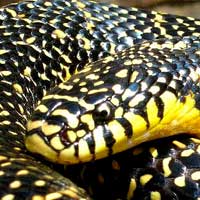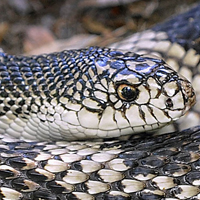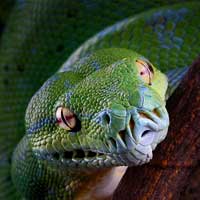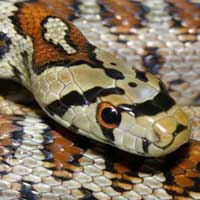Eastern Milksnake: A Complete Care Guide
The Eastern Milksnake is scientifically named Lampropeltis triangulum triangulum. It belongs to the Colubridae family, a diverse group of non-venomous snakes.
Scientific Name: Lampropeltis triangulum triangulum
Snake Family: Colubridae
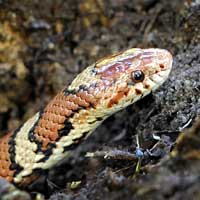
Eastern Milksnake: An Overview
The Eastern Milksnake (Lampropeltis triangulum triangulum) is a striking non-venomous snake, renowned for its vibrant red, black, and cream or gray banding. Found across eastern North America, this adaptable snake is a popular choice for pet owners and snake enthusiasts alike. Known for its docile temperament and manageable size, the Eastern Milksnake is ideal for both beginners and experienced reptile keepers. This guide will provide an in-depth look at its habitat, diet, care requirements, and more.
Where Does the Eastern Milksnake Live?
The Eastern Milksnake is highly adaptable and thrives in various environments, from forests to urban areas. Replicating its natural habitat in captivity is crucial for its well-being.
| Habitat Feature | Description |
|---|---|
| Geographic Range | Eastern North America, including parts of Canada and the United States |
| Preferred Environment | Woodlands, fields, rocky areas, and suburban environments |
| Climate | Temperate, with moderate humidity |
What Does the Eastern Milksnake Eat?
The Eastern Milksnake is a carnivorous predator that feeds on small mammals, birds, reptiles, and amphibians in the wild. Providing a proper diet in captivity is essential for its health.
- Juveniles: Feed on pinky mice every 5-7 days.
- Adults: Feed on adult mice or small rats every 7-10 days.
- Prey Size: Ensure prey is no larger than 1.5 times the snake’s girth.
- Hydration: Provide fresh water daily for drinking and soaking.
Behavior and Temperament of the Eastern Milksnake
The Eastern Milksnake is known for its shy and curious nature, making it a delightful pet. Its calm demeanor makes it easy to handle, though occasional defensive behaviors may occur.
- Shy Nature: Often seeks hiding spots but becomes more confident with regular handling.
- Activity Level: Primarily nocturnal but may explore its enclosure during the day.
- Defensive Behavior: Rarely bites but may vibrate its tail or musk when startled.
How to Ensure a Healthy and Long Life for the Eastern Milksnake
With proper care, the Eastern Milksnake can live up to 20 years in captivity. Maintaining an optimal environment and monitoring for health issues are essential for its longevity.
| Health Issue | Symptoms | Prevention |
|---|---|---|
| Respiratory Infections | Wheezing, open-mouth breathing | Maintain proper humidity and temperature |
| Skin Shedding Issues | Incomplete or stuck sheds | Ensure adequate humidity levels |
| Parasites | Visible mites, itching | Regularly clean and disinfect the enclosure |
Reproductive Traits of the Eastern Milksnake
The Eastern Milksnake is oviparous, meaning it lays eggs. Breeding them in captivity is a rewarding experience for reptile enthusiasts.
- Mating Season: Late spring to early summer.
- Incubation Period: Approximately 60-65 days.
- Clutch Size: Typically 6-12 eggs.
- Maintain an incubation temperature of 80-85°F for optimal egg development.
How to Handle and Care for the Eastern Milksnake
Caring for the Eastern Milksnake is straightforward, making it an excellent pet for beginners and experienced keepers. Regular handling and proper habitat care ensure a stress-free and healthy snake.
- Provide an enclosure with a temperature gradient of 75-85°F.
- Use a substrate like aspen shavings or coconut fiber for burrowing.
- Include hiding spots, climbing branches, and enrichment items.
- Handle gently and regularly to build trust and reduce stress.
- Ensure the enclosure is cleaned frequently and provide fresh water daily.



